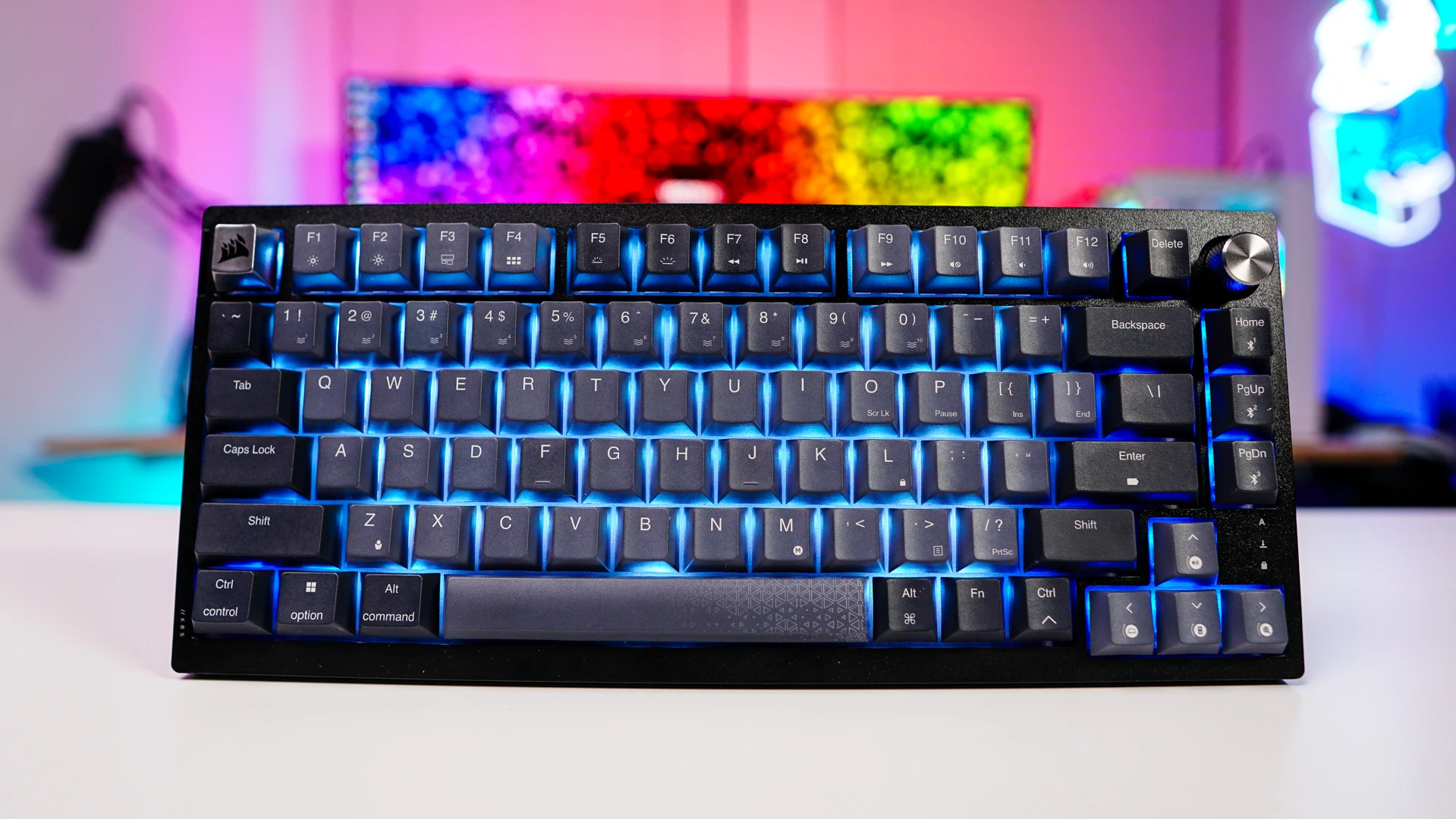Corsair K65 Plus Wireless Overview
Taking a first look at the K65 Plus Wireless it has the pretty standard 75% layout. If you aren’t familiar with the 75% layout, basically take the 65% layout and add a function row. 75% has been extremely popular over the past couple of years as its still smaller than a TKL keyboard, but offers almost the same functionality in a smaller profile. The outer frame is mainly made of plastic, but the keyboard overall feels really solid and is quite heavy.
When it comes to the colorway of the keyboard the outer frame is black with most of the keycaps being a dark grey and a few select keys towards the outside of the keyboard being a different shade of black. Overall I do like the colorway and its nice to get a keyboard from Corsair that isn’t your standard black frame with black keycaps.
In the top right corner of the keyboard you’ll find a silver rotary dial. By default this can be used for volume control and you can press it in to mute as well. You will be able to set the dial to do different things within Corsair’s iCUE software. Also compared to most 75% keyboards with a volume knob they have put the Delete key next to it with the Home, Page Up, and Page Down keys below it.
One of the main reasons for this is because there are three small indication LEDs towards the bottom corner of the keyboard. Also in the bottom corner are your dedicated arrow keys, which many people will appreciate.
When it comes to the keycaps Corsair is using PBT dye-sublimated which are single shot. If you aren’t familiar PBT keycaps are much more sturdy than the typical ABS keycaps you find on a lot of mainstream gaming keyboards. They also do not show shine or wear, so your keyboard is always looking like you just got it. Another thing that is a bit different with this keyboard is that the actual legends on the keycaps are not see-through. In the top left-hand corner of the keyboard you’ll find a pretty sleek silver keycap with the Corsair logo on it.


Under the keycaps you’ll find Corsair’s own MLX Red linear switches. These switches come pre-lubed from the factory and have an actuation force of 45g, pre-travel of 1.9mm, total travel of 4mm, and have a lifespan of 70 million keystrokes. This keyboard does feature a hot-swappable design so you can easily swap out the switches down the line. It is also worth noting that the keyboard has a steel top plate and two layers of sound dampening which include high density foam and a silicon pad.


On the top-edge of the keyboard you’ll find some connections and controls. On one side is your USB-C connection and a mode switch. You can switch between 2.4 GHz wireless, off, and Bluetooth. When in off mode you can still use the keyboard wired. On the opposite side is a switch to toggle between Windows and Mac mode and you’ll find your 2.4 GHz dongle. I like that there is a place on the keyboard for this dongle so you never forget it. The dongle is your standard USB-A dongle.




Looking at the keyboard from the side we can see that it does sit at a slight angle. There are two more levels of adjustment thanks to the pop-out feet on the bottom of the keyboard. There is also a small circular button on the side of the keyboard which will toggle the lighting on and off. The bottom of the keyboard has a sort of glossy finish and we can see four large rubber feet.










